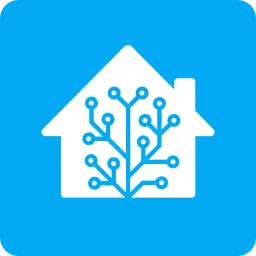Nice ones! Since it ain’t a server I haven’t mentioned it, but I had my WiFi ssids named CLACKS.
Daaric
- 3 Posts
- 20 Comments
Since I’m kinda fan of Terry Pratchett, I naturally have HEX at home.
It used to be the name of my character back when I played DnD, and the very origin was some online dwarvish names generator.

 4·8 months ago
4·8 months agoSame boat here, I have the 5 II and I absolutely love it. Great size, the camera is OK on auto but can do wonders in manual mode (depending on your skill).
The lack of software support is a bummer though. I was surprised it’s not in LineageOS’ official support anymore…Do you use any custom ROM on your Xperia?

 42·8 months ago
42·8 months agoPIA

 4·8 months ago
4·8 months agoAn X is an X, the social network shall be known as X, formerly Twitter /J

 20·9 months ago
20·9 months agoIf I can’t have control over shit happening, then I just don’t care.
I think it was Další Lama who said: “If a problem has a solution, there is no reason to worry. If there is no solution, worrying will not help.”

 9·9 months ago
9·9 months agoI do have an Onyx Boox tablet, the Note 2 plus to be specific, and I do run Calibre and calibre-web on my home server.
Though I don’t actually use calibre-web at all, and the full flat calibre only to organise the collection. Usually I just copy the files to my tablet manually, but I do leverage the built-in RSS reader in Calibre to create my own epub “newspaper” periodically, which is synced to the tablet by Synching.
I have also used to have (actually still have it, but not use it) an old Kobo touch with Koreader, and I intended to download the books wirelessly using the calibre-web, but honestly, I just copied it over an USB anyway…
If I think about it, I could simply sync my whole library over Synching.
Life is too short to brew your coffee safely!

 1·11 months ago
1·11 months agoThanks to everyone for ideas and your time. We have set a dropbox account and sent out a file request link, it is filling up already.
When this anniversary is over, on our next meeting I will bring up the possibility of deploying our own NAS with nextcloud at our building.
Cheers

 1·11 months ago
1·11 months agoI know of it but haven’t tried it yet. For my personal needs I actually use Zerotier to connect to my server remotely, but having two IP adresses is a bit anoying and not family friendly. Also it doesn’t work 100% of the time, sometimes I have troubles connecting. When the right time comes and I will get my IPv6 address I will switch to Wireguard to tunnel home, but until then…
In my case right now, any VPN is out of question, as it doesn’t meet the no-authorization condition, and I don’t want 60 people poking around on my LAN.
But thanks anyway, I might try Tailscape over zerotier to see if it is better.

 3·11 months ago
3·11 months agoOh shoot, great, that should do it for now and is definitely eisier than setting out the nextcloud. Though I hope we will get our own nextcloud server somewhere down the line.
Thanks

 1·11 months ago
1·11 months agoI do run Nextcloud on my home server, and in an ideal world I would like to use it as I have sufficient disk space, even though my internet connection speet would be the bottleneck. The problem is, I am at the moment hidden behind a hell of a NAT maze and my server is simply not accessible from outside, even with VPN.
I have found out in the meantime, As you said, I found out as well, Nextcloud permit uploading without need for signing up. I am now thinking about setting up an acount at some Nextcloud provider, but they seem to by limited by capacity…

 1·11 months ago
1·11 months agoI thought of google drive as well, even if I had to pay for expanding the capacity. Unfortunately it requires signing up to permit upload, download is permited to everyone with the link though.

 51·11 months ago
51·11 months ago“Can you tell in one sentence or less, why is America the greatest country in the world?”

 1·11 months ago
1·11 months agoThanks for pointing me somewhere. I have managed to control individual channels and mix them with rgb_color, one strip was working quite fine on its own, on the other hand the second one cased troubles. It used the white channel, and whenever the white channel got active, the rest got shut down.
Eventually I have decided it’s not worth any more of my time and replaced it with individual 2ch dimmers. I will save my 5ch for somewhere I can actually utilize it, or to tinker with the settings in the future.
I think it is dangerous, although I like music as well. The only thing I would consider are bone conducting headphones that leaves your ears open and don’t block the outside world.

 2·1 year ago
2·1 year agoHi, I have an Unraid server (currently offline due to moving :'-/ ) running
VMs:
- 2 full flat Windows and Pop_OS! VMs with GPU passed through
- 2 low resource Windows and Pop_OS! VMs accessible by VNC
- Home assistant OS
Docker containers:
- Calibre + Calibre-web: apart from managing my ebook library, calibre goes through my RSS feed and generates daily epub newspaper/magazines that are send by Syncthing to my eink tablet
- Syncthing: apart from that it also synchronizes my handwritten notes from my eink tablet between my devices
- Nextcloud: intended to replace Google/Microsoft cloud, but, due to previous apartment’s internet connection with PIA triple-ish NAT situation, is only used to backup photo/video from my phone (might change later)
- EMBY: media streaming
- Gitea: WIP, not currently used
- dokuwiki: WIP, intended to acumulate manuals to home appliances and stramlined directions on how to use and maintain them
- influxDB and Grafana: values and graphs from Home Assistant
The server was born when I merged my desktop PC, that was off and not utilized most of the time anyway, and my off the shelf NAS with 4 drives in raid5, that was slow, loud and could only run built-in garbage services. I ran Emby on Windows on my desktop, meaning I would have to manully turn it on every time I wanted to watch something.
Now my server runs on Ryzen 5 1600 with 48GB of RAM, GTX 1060 salvaged from a minig rig and total of 7 drives - 4 HDDs, 2 Sata SSD mirrored for cache and containers and 1 NVME SSD for VMs.


Never, they’ll try again and again with different names, covered by different purposes and stuck to another law.